Sir Joshua Reynolds
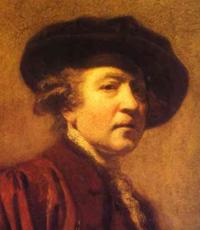
Sir Joshua Reynolds Biography
Joshua Reynolds was born into the family of the Reverend Samuel Reynolds, who held the post of headmaster in a local grammar school, which Joshua attended as a boy. The young Reynolds received a good classical education; he loved literature and became well-read in classical Greek and Roman authors. He revealed his interest in and talent for painting rather early.
Sir Joshua Reynolds 225 Most Important Paintings and Artworks
- Clotworthy Skeffington, Later 1st Earl Of Massereene.
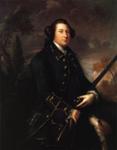
1744-46. Oil on canvas. 121.3 x 96.5 cm. Private collection.
- The Eliot Family.
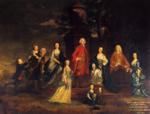
c.1746. Oil on canvas. 87 x 114 cm. Trustees of the St Germans Estate, Port Eliot, Cornwall, UK.
- The Eliot Family. Detail.
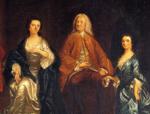
c.1746. Oil on canvas. 87 x 114 cm. Trustees of the St Germans Estate, Port Eliot, Cornwall, UK.
- Self-Portrait.
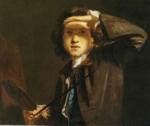
c. 1747-48. 63 x 74 cm. Oil on canvas. National Portrait Gallery, London, UK.
- Paul Henry Ourry.
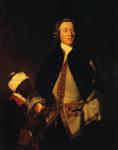
c.1748. Oil on canvas. 127 x 102 cm. Saltram House, Devon, National Trust, UK.
- Thomas And Martha Neate, With Tutor.
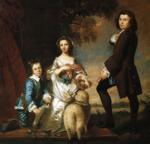
1748. Oil on canvas. 167 x 180 cm. The Metropolitan Museum of Art, New York, USA.
- Thomas And Martha Neate, With Tutor. Detail.
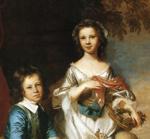
1748. Oil on canvas. 167 x 180 cm. The Metropolitan Museum of Art, New York, USA.
- Thomas And Martha Neate, With Tutor. Detail.
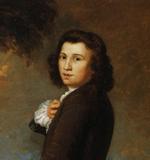
1748. Oil on canvas. 167 x 180 cm. The Metropolitan Museum of Art, New York, USA.
- Man In A Brown Coat.
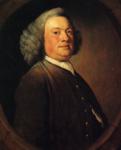
1748. Oil on canvas. 76 x 63.5 cm. Marble Hill House, Twichenham, English Heritage, UK.
- Sir Thomas Kennedy, James Caulfeild, Mr Ward And Mr Phelps.
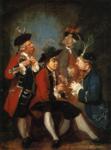
1751. Oil on canvas. 63 x 52 cm. National Gallery of Ireland, Dublin, Ireland.
- Sir Thomas Kennedy, James Caulfeild, Mr Ward And Mr Phelps. Detail.
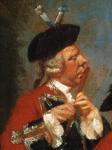
1751. Oil on canvas. 63 x 52 cm. National Gallery of Ireland, Dublin, Ireland.
- Sir Thomas Kennedy, James Caulfeild, Mr Ward And Mr Phelps. Detail.

1751. Oil on canvas. 63 x 52 cm. National Gallery of Ireland, Dublin, Ireland.
- Augustus Keppel.

1752-53. Oil on canvas. 239 x 147.5 cm. National Maritime Museum, London, UK. Read Note.
- Emily, Duchess Of Leinster.
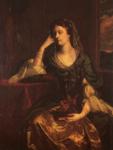
1753. Oil on canvas. Private collection. Read Note.
- James Fitzgerald, Duke Of Leinster.
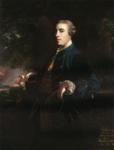
1753. Oil on canvas. Private collection. Read Note.
- Self-Portrait.
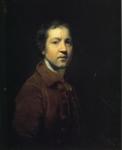
1753-55. Oil on canvas. 74 x 61.5 cm. c. Tate Gallery, London, UK.
- Mrs Hugh Bonfoy.
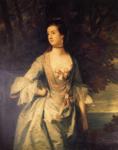
1754. Oil on canvas. 124 x 100 cm. Trustees of the St Germans Estate, Port Eliot, Cornwall, UK.
- Francis Hastings, Earl Of Huntingdon.
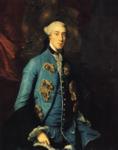
1754. 125.7 x 100.3 cm. Oil on canvas. Henry E. Huntington Art Gallery, San Marino, CA, USA.
- Francis Hastings, Earl Of Huntingdon. Detail.
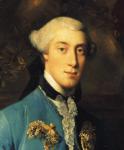
1754. 125.7 x 100.3 cm. Oil on canvas. Henry E. Huntington Art Gallery, San Marino, CA, USA.
- Sir John Molesworth.
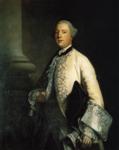
1754. Oil on canvas. 127 x 102. Pencarrow, Cornwall, UK.
Sir Joshua Reynolds Bibliography
Sir Joshua Reynolds. The Painter in Society. By Riocharrd Wendorf. Harward University Press. 1996.
Joshua Reynolds. The Life and Times of the First President of the Riyal Academy. By Ian McIntyre. The Penguin Press. 2003.
Sir Joshua Reynolds. The subject pictures. By Martin Postle. Cambridge University Press. 1995.
Joshua Reynolds: The Creation of Celebrity by Martin Postle. Tate, 2005.
Sir Joshua Reynolds: A Complete Catalogue of His Paintings by David Mannings, Martin Postle. Paul Mellon Center, 2000.
Memoirs of Sir Joshua Reynolds by Joseph Farington, Martin Postle. Pallas Athene, 2005.
The Letters of Sir Joshua Reynolds by John Ingamells, John Edgcumbe. Paul Mellon Center, 2000.
Portrait of Dorothy, Countess of Lisburne, née Shafto, eldest daughter of John Shafto of Whitworth, county Durham. She married the Hon. Wilmpt Vaugham (1729-1800), as his second wife, on April 19, 1763. Her husband succeeded to the title of 4th Viscount Lisburne in 1766 and was created the 1st Earl of Lisburne in 1776.
See: Sir Joshua Reynolds.Dorothy, Countess of Lisburne. Dorothy's brother, Robert Shafto (1732-1797), MP for County Durham from 1760 to 1768, was a man of fashion who married two heiresses in turn. His charm and extravagance were celebrated in the popular nursery rhyme "Bobby Shafto": Bobby Shafto’s gone to sea,
With silver buckles on his knee;
He’ll come back and marry me,
Bonny Bobby Shafto!
Bobby Shafto’s fat and fair,
Combing down his yellow hair;
He’s my love for evermore,
Bonny Bobby Shafto. Robert Shafto (d.1780) (portrait by Reynolds), the eldest son of Robert Shafto of Benwell (d.1735) is NOT Bonny Bobby Shafto.
See: Sir Joshua Reynolds.Robert Shafto.Robert Orme (1725-1790) was a Lieutenant in the Coldstream Guards and aide-de-camp to General Braddock in America; he was wounded in an ambush by the French near Fort Duquesne, later renamed Pittsburg, He returned to England shortly before the outbreak of the Seven Years’ War.
See: Sir Joshua Reynolds.Robert Orme.Augustus Keppel, 1st Viscount (1725-86), Admiral; 2nd son of William Anne, 2nd Earl of Albemarle and his wife Lady Anne Lenox (1703-89). He sailed around the world with George Anson in 1740; in 1749 he went as commodore to the Mediterranean, taking Reynolds to Italy; rear-admiral of the Blue 21 Oct. 1762; vice-admiral 24 Oct.1770; after long-running quarrels with the Admiralty he was court-martialled in Feb.1779 for his conduct in the battle with the French off Ushand and, though acquitted, he was ordered to strike his flag the following April; he then retired from service, entering Parliament as MP for Surrey. Keppel, who was created a viscount 1782, never married. He was a lifelong friend of Reynolds.
Anne, Countess of Albemarle (1703-89) Lady Anne Lennox, daughter of the 1st Duke of Richmond (and so granddaughter of Charles II) and his wife, Anne, daughter of Lord Brudenell; married 21 Feb.1723, William Anne, 2nd Earl of Albemarle (d.1754). Among her numerous children were Augustus, Caroline and Elizabeth Keppel.
See: Sir Joshua Reynolds.Augustus Keppel. Augustus, 1st Viscount Keppel. Lady Elizabeth Keppel. Augustus Keppel. Augustus Keppel. Anne, Countess of Albemarle.Samuel Johnson (1709-84) Poet, essayist, literary critic, dramatist and author of the celebrated Dictionary of the English Language (1755), son of Michael Johnson, bookseller, and his wife, Sarah Ford. On 8 July 1735, he married Elizabeth Porter (1689-1752), a widow. In 1737 he went to London where he met Reynolds c. 1756, at whose suggestion the Literary Club was founded in 1764, centered around Johnson as a conversationalist.
His major works: Life of Richard Savage (1745), A Dictionary of the English Language (1755), The History of Rasselas, Prince of Abissinia (1759), The Plays of William Shakespeare (1765), A Journey to the Western Islands of Scotland (1775), Lives of the English Poets (1781), etc.
See: Sir Joshua Reynolds.Samuel Johnson. Kitty Fisher, Catherine Maria (‘Kitty’) Fisher (died 1767) was one of the most renowned courtesans in London. She was known for her beauty, brave horsemanship and wit. In 1766 she married a John Norris, and became known for her charity. She died the next year as a result of poisoning by lead-based cosmetics. She was a model for several painters, including Sir Joshua Reynolds, Nathaniel Hone, Philip Mercier and James Northcote. Her name is known to us from childhood due to the nursery rhyme “Lucy Locket lost a pocket, Kitty Fisher found it…”
See: Sir Joshua Reynolds.Kitty Fisher. Kitty Fisher.The LennoxesCharles Lennox, 3rd Duke of Richmond and Lennox (1735-1806), British statesman, was the elder son of Charles, 2nd Duke of Richmond (a legitimate descendant of an illegitimate son of King Charles II of England) and his wife Lady Sarah, daughter of Earl Cadogan. In 1757 he married Lady Mary Bruce (see her portrait Mary, Duchess of Richmond).
In 1765 he was appointed British ambassador extraordinary in Paris, and in the following year he became a secretary of state.
The Duke was a firm supporter of the American colonists; and he initiated the debate of 1778 calling for the removal of troops from America. He opened, in March 1758, at his house in Whitehall, a gallery of casts of antique statues where students could draw under the direction of Wilton and Cipriani. He soon lost interest and the gallery was closed in either 1765 or 1766. He was a member of the Society of Dilettanti. Richmond died in December 1806, and, leaving no legitimate children, he was succeeded in the peerage by his nephew Charles, son of his brother, General Lord George Henry Lennox.
See: Sir Joshua Reynolds.Charles Lennox, 3rd Duke of Richmond. Mary, Duchess of Richmond. The Duke’s sisters Lady Caroline (1723-1774), Lady Emily (1731-1814), Lady Louisa and Lady Sarah Lenox, are all presently known by the book Aristocrats by Stella Tillyard (The Noonday Press, 1992) Lady Caroline (1723-1774), also known as Baroness Holland, in 1744, eloped with Henry Fox, 1st Baron Holland, a politician who was eighteen years her senior. The marriage was disapproved of by her family, but proved a happy one. The couple had several sons, including the great Whig politician, Charles James Fox. Their home, Holland House in Kensington, London, became famous as a social and political center.
See: Sir Joshua Reynolds.Caroline, Lady Holland.Lady Emily Lennox (1731-1814), also known as Emily FitzGerald, the Countess of Kildare (1747-1761), as the Marchioness of Kildare, (1761-1766) and the Duchess of Leinster was the second of the Lennox sisters. She married James FitzGerald, 20th Earl of Kildale, in 1747 and lived with him in Ireland. They had nineteen children, and Lord Kildare was created successively Marquess of Kildare and Duke of Leinster in recognition of his contribution to the political life of his country. After his death in 1773, the Duchess caused a scandal by marrying her children's tutor, William Ogilvie, with whom she had begun an affair some years earlier. Ogilvie was nine years her junior. Emily gave birth to three children by him.
See: Sir Joshua Reynolds.Emily, Duchess of Leinster. James FitzGerald, Duke of Leinster. Emily, Duchess of Leinster.Lady Louisa Lennox (1743-1821), the third of the four Lennox sisters. After the death of their parents, Lady Louisa was brought up by her elder sister Emily FitzGerald, Duchess of Leinster, in Kildare, Ireland. She married Tom Connolly, the grand-nephew of William Connolly, Speaker of the Irish House of Commons. The couple lived in their estate Castletown House, County Kildare, Ireland. She directed the decoration of the mansion, while her husband raised and rode racehorses.
See:Sir Joshua Reynolds.Thomas Conolly.Lady Sarah Lennox (1745-1826) the youngest and the most infamous of the four sisters. After the death of both parents, she was brought up by her elder sisters. In 1760, Sarah was introduced to court and caught the eye of the young King George III. Her family hoped to see her as queen, but the King's advisors dissuaded him from this marriage, on political grounds. Her sister Caroline was the wife of Henry Fox), a member of the politically radical Fox family. In 1762, Sarah was married off to Sir Charles Bunbury. Their marriage was not a happy one, and Sarah did not try to hide this, earning herself a negative reputation. In 1769, she eloped with Lord William Gordon, with whom she had been having an affair, and was ostracised by society as a result. Eventually she settled down with an impoverished army officer, George Napier. They were married in 1781, and had eight children, including Charles James Napier (1782-1853) British general, Commander-in-Chief in India.
See: Sir Joshua Reynolds.Lady Sarah Bunbury Sacrificing to the Graces.William Augustus, Duke of Cumberland (1721-65) Second surviving son of George II and Queen Caroline. General; served at Dettingen 1743, Culloden 1746, and later in Holland and Germany.
See: Sir Joshua Reynolds.William Augustus, Duke of Cumberland.John Russel, 4th Duke of Bedford (1710-1771) a British statesman. He was the second son of Wriothesley Russell, 2nd Duke of Bedford, and his wife, Elizabeth, daughter and heiress of John Howland of Streatham, Surrey. In 1731 Lord John Russell married Lady Diana Spencer (d. 1735), daughter of Charles Spencer, 3rd Earl of Sunderland. A year later, after his elder brother’s death he became Duke of Bedford. In April 1737 he married Lady Gertrude Leveson-Gower (d. 1794), daughter of John Leveson-Gower, 1st Earl Gower. In 1756-1761 he occupied the post of Lord Lieutenant of Ireland, that is, the head of the administration of Ireland. In 1761-1763 he was Lord Privy Seal and in this post he signed in February 1763 on the part of Great Britain the Treaty of Paris, which ended the Seven Years’ War.
In 1763 he took the post of the Lord President of the Council. The duke held many public offices: lord-lieutenant of Bedfordshire and Devon, and chancellor of Dublin University among others, and was a Knight of the Garter.
His health had been declining for some years, and in 1770 he became partially paralysed. He died in 1771, and was buried in the family burying-place at Chenies. His three sons all died before him, and the title was inherited by his grandson, Francis Russel, son of Frances Russel, Marquess of Tavistock and his wife Elizabeth, daughter of William Keppel 2nd Earl of Albemarle.
See: Sir Joshua Reynolds.John Russel, 4th Duke of Bedford. Gertrude, Duchess of Bedford.David Garrick (1717-1779), British actor, playwright and theater manager was descended from a French Protestant family named Garric or Garrique of Bordeaux, which had settled in England. He started his career of a playwright with a dramatic piece, Lethe, or Aesop in the Shades, it was played at Drury Lane on the 15th of April 1740. A year later he made his first appearance on the stage. First he played under the name of Lyddal. His success strengthened his desire to make a theater career. He became the most popular player of Shakespearian roles of his time – playing Hamlet, Lear, Richard, among others. He also became a co-owner and manager of Drury Lane Theater.
Garrick practically ceased to act in 1766, but he continued the management of Drury Lane. In 1776 he sold his share in the property, and took leave of the stage by playing a round of his favorite characters.
See: Sir Joshua Reynolds.David Garrick Between Tragedy and Comedy. David Garrick.Nelly O'Brien (died 1768) a courtesan, one of Reynolds favorite models. At the time of this famous portrait, she was the mistress of the 3rd Viscount Bolingbroke, to whose son she gave birth in 1764.
See: Sir Joshua Reynolds.Nelly O'Brien.Mrs Abington. a prostitute, later an actress and a courtesan. This portrait is said to show Mrs Abington in the character of Miss Prue in William Congreve's comedy, Love for Love.
See: Sir Joshua Reynolds.Mrs Abington. Mrs Abington.Charles Burney (1726-1814), Musician and historian of music,
the author of the monumental A General History of Music, (1776-89). Burney's portrait was painted by Reynolds in 1781 for Henry Thrale's library. His eldest son, James (1750-1821), became a distinguished officer in the royal navy, he sailed with Captain James Cook on his second and third voyages, and died a rear-admiral in 1821. His second son was the Rev. Charles Burney. His second daughter was Frances or Fanny (1752-1840), later Madame D'Arblay, a novelist and diarist who in her sharp, satirical portrayals of English society, anticipated Jane Austen. A life of Burney by Madame D'Arblay appeared in 1832.
See: Sir Joshua Reynolds.Charles Burney.Maria Anne Fitzherbert (1756-1837), nee Smythe, a Roman Catholic, had been twice married and twice widowed when the future George IV saw her for the first time at Richmond and fell in love. In 1785 they were secretly married. According to the law no member of the royal family under the age of 25 could marry without the King’s permission, nor could an heir to the throne marry a Roman Catholic. So George denied that the marriage had ever taken place and Maria Anne Fitzherbert was always regarded as the king’s mistress.
See: Sir Joshua Reynolds.Portrait of Maria Anne Fitzherbert.